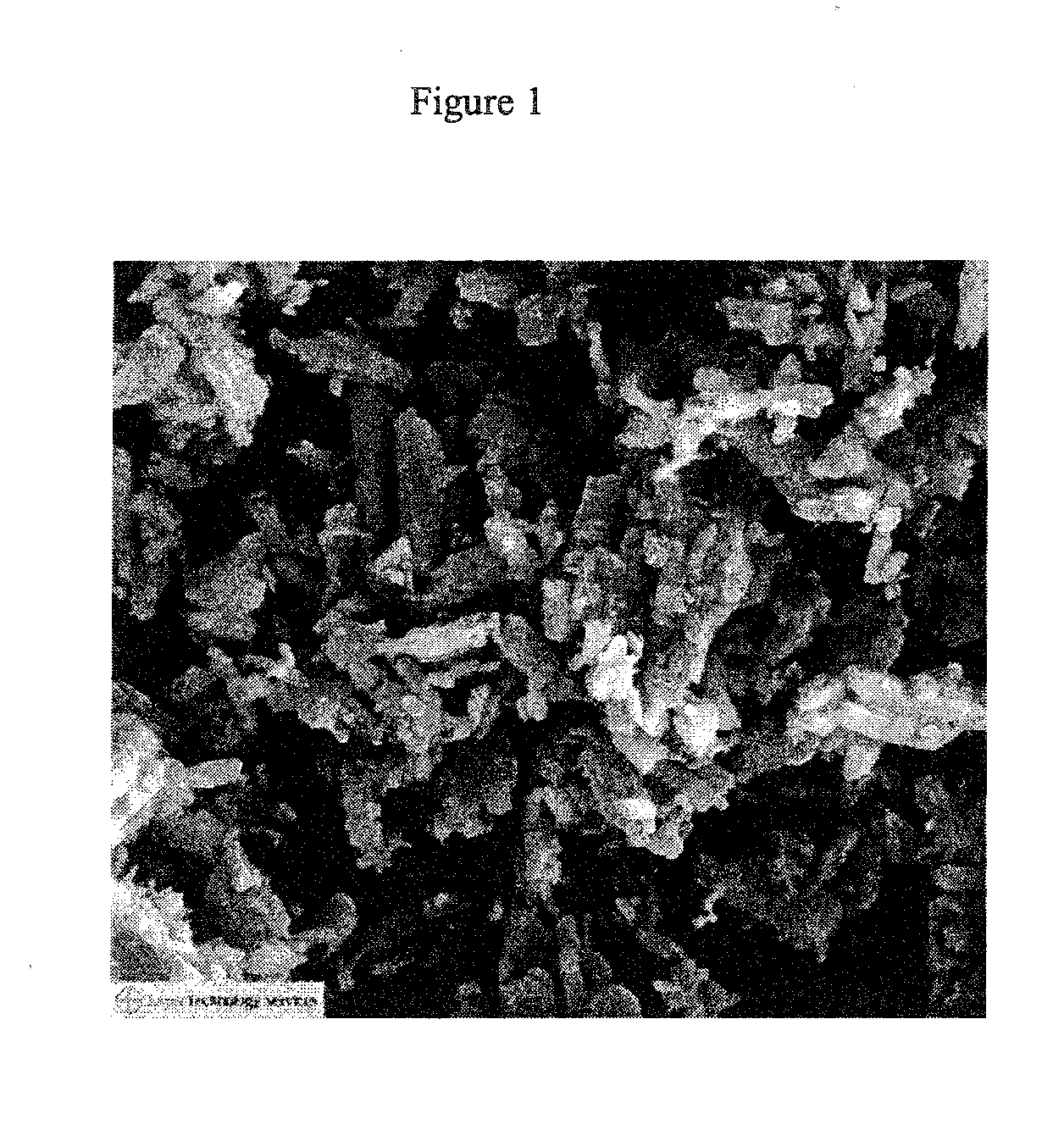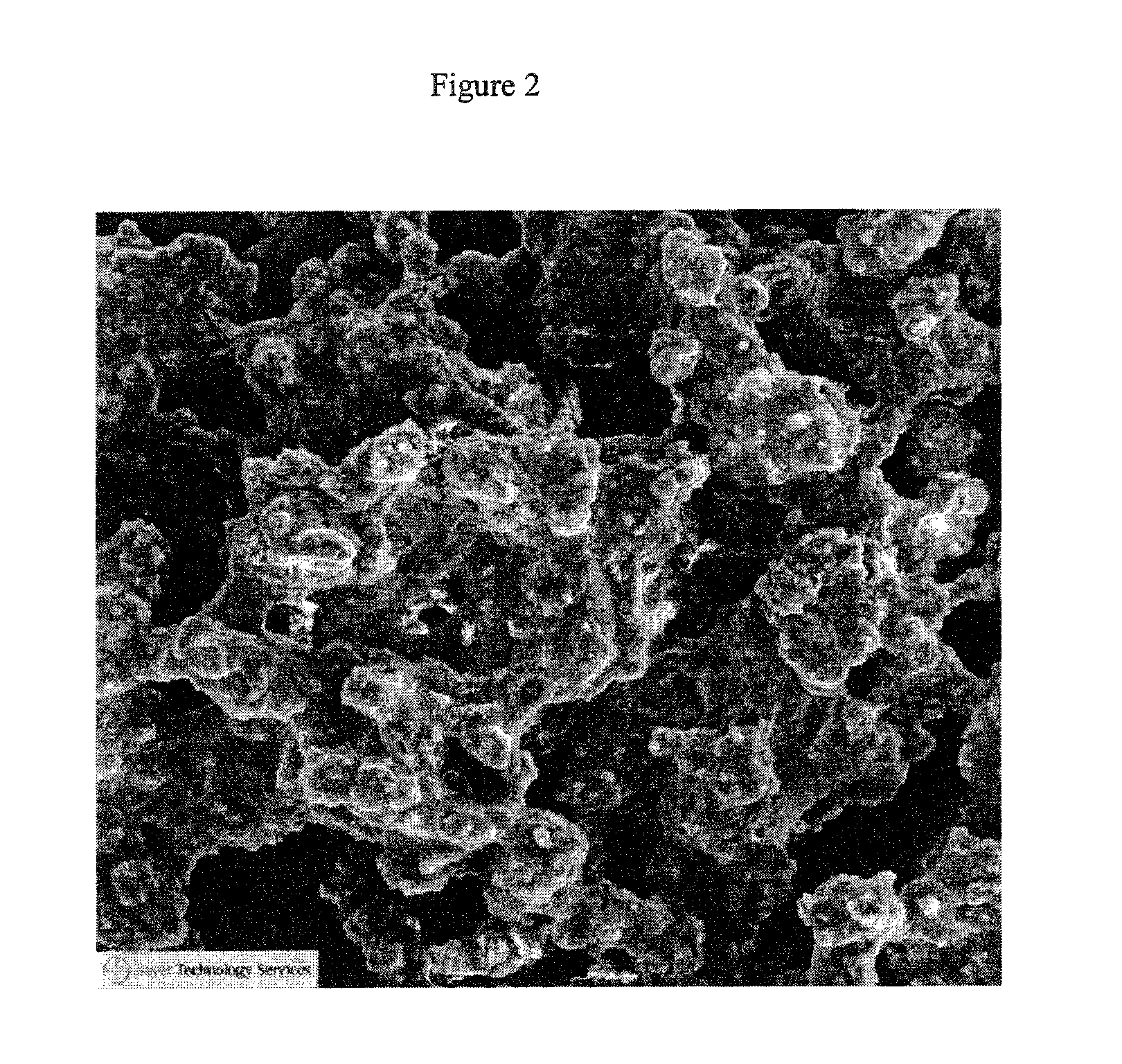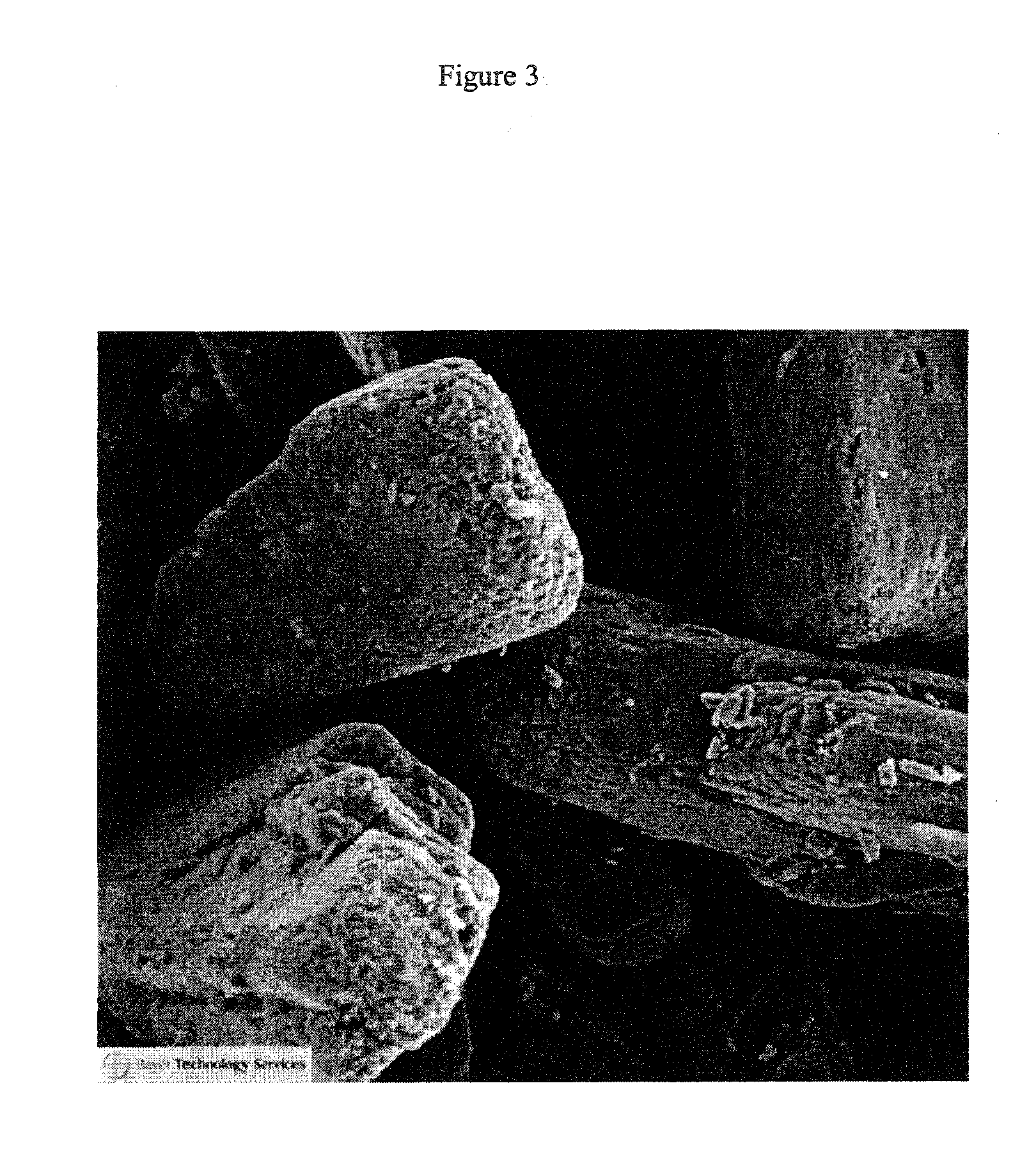Method and composition to improve absorption of therapeutic agents
- Summary
- Abstract
- Description
- Claims
- Application Information
AI Technical Summary
Benefits of technology
Problems solved by technology
Method used
Image
Examples
example 1
Selection of Milling Type
[0062]Several techniques were evaluated to determine the preferred type of milling techniques for use with aspirin in accordance with the invention. The techniques that were evaluated, and typical particle sizes of particles generated by the technique, are shown in Table 1. All sizes were determined using Laser Diffraction on a model MS 2000 Hydro S machine. The “d50” value is the average particle size of the milled sample, and “d90” represents the average particle size of at least 90% of the particles in the milled sample. Airjet, bead, and ball mill techniques were selected as being the most preferred in the invention because of the reliability of the techniques and the particle sizes obtained. Bead milling is less preferred because of its higher relative cost. The precipitation method and crystal synthesis also yielded small particle sizes but particles prepared using these techniques tended to agglomerate.
TABLE 1Milling Techniques and Particle SizeMillin...
example 2
Determination of Compatibility
[0064]The degradation products of various combinations of aspirin and various carbonates were determined for different combinations of aspirin and different grades and sources of carbonates to evaluate the compatibility and stability. Milling for about fifteen minutes appeared to slightly induce the production of free salicylic acid (FSA), but not to a significant extent. The percentage of acetyl salicylic salicylic acid (ASSA) was also measured, but it did not demonstrate any significant effects. The results are shown in Table 3 (all blend percentages are weight percentages obtained using High Performance Liquid Chromatography (HPLC))
TABLE 3Aspirin / Carbonate Blends and Production of Free Salicylic AcidAcetylSalicylicSalicylicAcidSample CompositionFSA (%)ASSA (%)100% Aspirin0.000.00100% Aspirin-Milled 15 min0.000.0080% Aspirin / 20% Sodium Carbonate0.170.0080% Aspirin / 20% Sodium 0.360.00Carbonate-Milled 15 min75% Aspirin / 25% Sodium Carbonate0.140.0075% As...
example 3
Selection of Aspirin / Carbonate Blends
[0065]Various percentages of aspirin and carbonates were prepared, formulated and pressed into pharmaceutical tablets using consistent techniques. The tablets were then tested for aspirin dissolution. The tablets were dissolved in 900 mL of an acetate buffer at pH 4.5 in a Distek OptDiss On-line Detection System. The sample basket was spun at 50 rpm and maintained at 37.0° C., + / −0.5°.
[0066]The results for tablets with sodium carbonate are shown in Table 4 and the results with calcium carbonate are shown in Table 5. The sample containing 90% aspirin and 10% sodium carbonate exhibited an increased aspirin release profile when compared with samples containing less than 10% sodium carbonate. The samples that contained more than 15% sodium carbonate showed strongly increased dissolution profiles.
TABLE 4Dissolution Profiles of Aspirin in Various Tablet FormulationsWeight %% ASA Dissolved at:SampleWeight %Sodium2 5 10 No.AspirinCarbonateminutesminutesm...
PUM
| Property | Measurement | Unit |
|---|---|---|
| Weight | aaaaa | aaaaa |
| Weight | aaaaa | aaaaa |
| Fraction | aaaaa | aaaaa |
Abstract
Description
Claims
Application Information
 Login to View More
Login to View More - R&D
- Intellectual Property
- Life Sciences
- Materials
- Tech Scout
- Unparalleled Data Quality
- Higher Quality Content
- 60% Fewer Hallucinations
Browse by: Latest US Patents, China's latest patents, Technical Efficacy Thesaurus, Application Domain, Technology Topic, Popular Technical Reports.
© 2025 PatSnap. All rights reserved.Legal|Privacy policy|Modern Slavery Act Transparency Statement|Sitemap|About US| Contact US: help@patsnap.com



